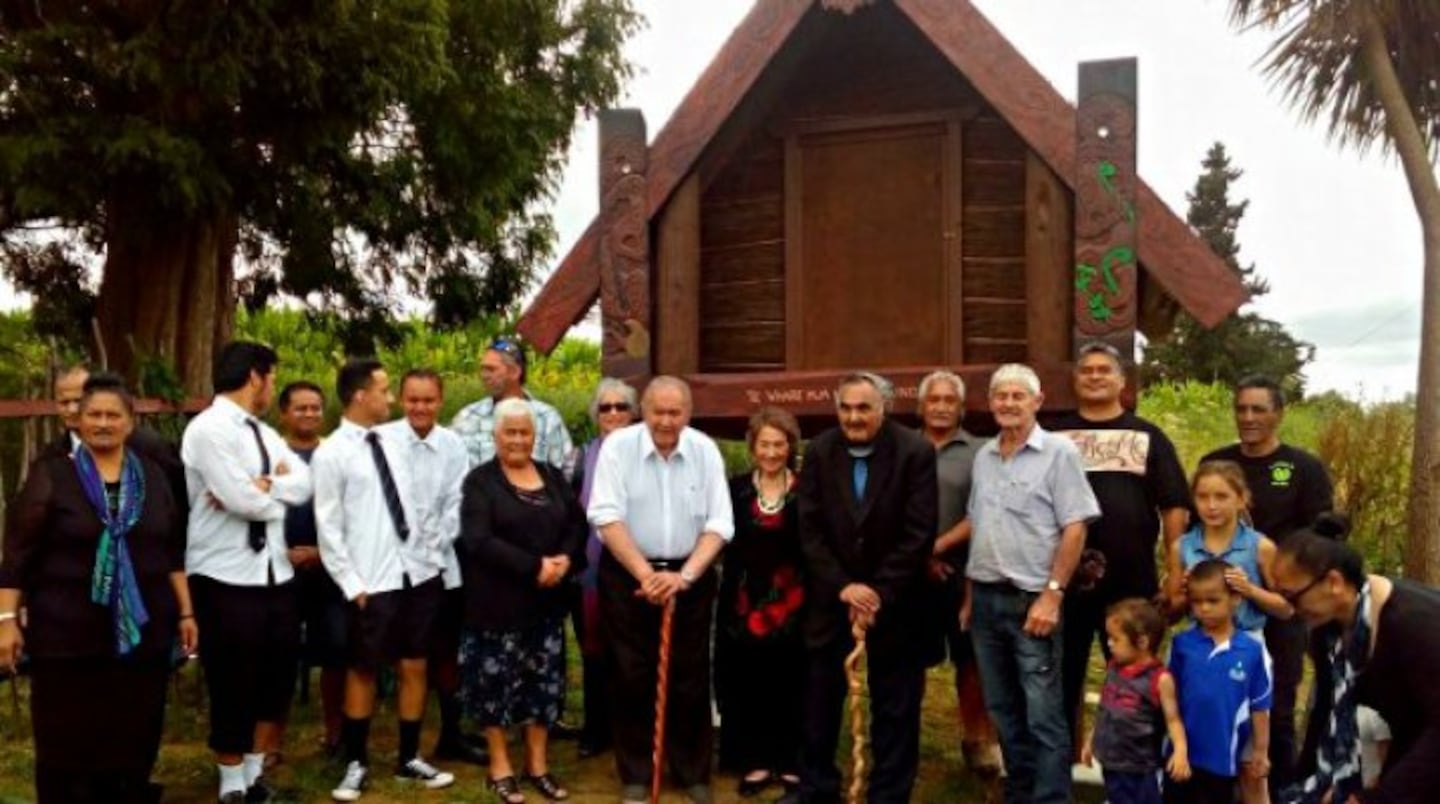Master carver Mitch Hughes second from right; kaumātua Te Pare Joseph and Tame Green with tokotoko; teacher Hōhepa Hei to the rear-left of the pātaka kai; principal Hīrere Moana front left with some of the students involved in the project.
The first pātaka kai to be built in the King Country for at least 100 years has been opened at Te Wharekura o Maniapoto.
The pātaka kai Te Huahua o Kinohaku, named after the ancestress of the area, was opened on Tuesday near Te Kūiti and blessed by kaumātua Te Pare Joseph and Tame Green.
The tohunga whakairo of the project Mitch Hughes (Ngāti Maniapoto and Te Āti Awa) said he was "stoked to be part of the kaupapa.”
Hughes said he worked with six teenagers who were "onto it” and helped them gain credits towards the NCEA paper Traditional Māori Kai levels 1,2, and 3.
Student, Uira Wirepakio finishing some detail work on the koruru or gable.
Hughes started the carving back in September 2016 with children painting and decorating all the whakairo in the final months.
Local builders James Waretini and Hugh Lilley from Kiwispan helped the students build the pātaka kai frame and its foundations.
Te Wharekura o Maniatpoto's science teacher Hōhepa Hei, (Te Whānau-a-Apanui, Te Whakatōhea, Ngāti Porou) said he wanted to change the way they teach by incorporating a learning programme that his students would like more.
Food growing in the māra kai includes tomatoes, corn, silver beat, watermelon, capsicum and a traditional spinach given to the school from Kaiwaka Riki of Raglan.
Hei says the future projects at the kura will hopefully be based on sustainable future and land care research such as agricultural and horticultural sciences, water protection, propagation of native plants, hospitality, and Māori arts and crafts.
The completed pātaka kai named Te Huahua o Kinohaku
After the blessing kaumātua Te Pare Joseph quipped, “Now all you need to do is put more kai in this pātaka.”

